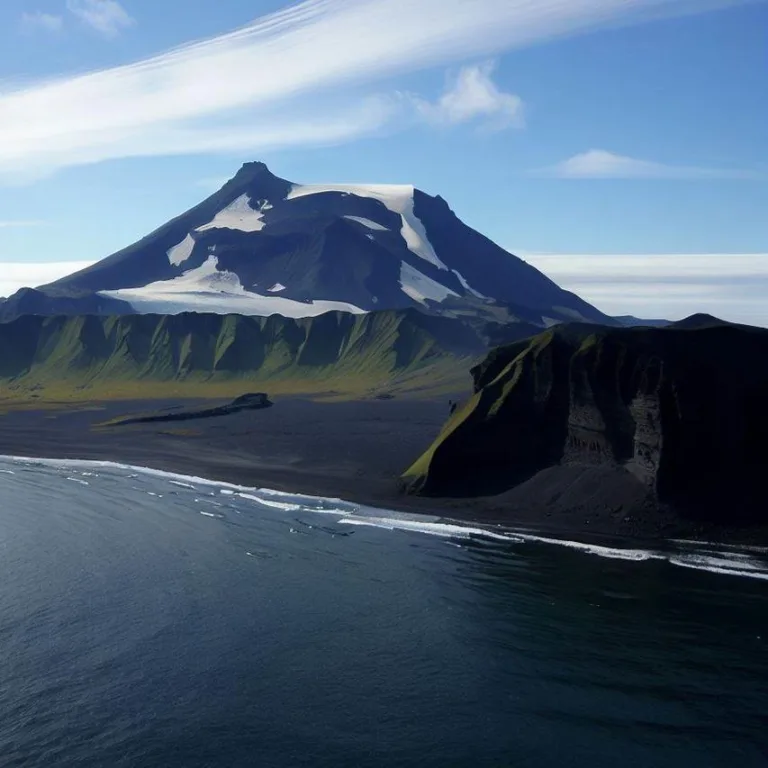Welcome to our comprehensive guide on Jan Mayen, a fascinating and remote island located in the Arctic Ocean. This article will take you on a journey to uncover the mysteries and wonders of this unique and seldom-explored destination.
Introduction to jan mayen
Jan Mayen is a volcanic island situated in the northern part of the Atlantic Ocean. It is an integral part of the Kingdom of Norway and holds the distinction of being one of the most remote inhabited islands on Earth. Its isolation, rugged landscapes, and captivating natural beauty make it a hidden gem for adventurers and nature enthusiasts.
Geographical features
The island of Jan Mayen is dominated by Beerenberg, a dormant stratovolcano and the northernmost active volcano in the world. Beerenberg’s towering presence lends an awe-inspiring backdrop to the island’s landscape. The island is also home to stunning glaciers, coastal cliffs, and breathtaking fjords that offer unparalleled views and photographic opportunities.
Flora and fauna
Despite its harsh climate, Jan Mayen supports a surprising variety of flora and fauna. Arctic foxes, reindeer, and various seabird species can be spotted on the island. During the summer months, the island’s flora blooms, transforming the stark terrain into a burst of color.
Human presence and research stations
Jan Mayen hosts a small number of inhabitants, primarily consisting of personnel from the Norwegian Armed Forces and the Norwegian Meteorological Institute. The island serves as a base for scientific research, particularly in meteorology and geophysics. The remote location and challenging conditions create a unique environment for researchers to study Arctic phenomena.
Exploration and activities
For intrepid travelers and adventurers, Jan Mayen offers a once-in-a-lifetime experience. Activities such as hiking, glacier trekking, and wildlife watching are popular among those who venture to the island. The opportunity to witness the aurora borealis (Northern Lights) dancing across the Arctic sky is a highlight for many visitors.
Preservation and conservation
Due to its pristine environment and delicate ecosystem, Jan Mayen is subject to strict conservation efforts. Visitors are encouraged to follow responsible tourism practices and adhere to guidelines to minimize their impact on the island’s fragile nature.
Frequently Asked Questions (FAQs)
Q: How do I get to Jan Mayen?
A: Access to Jan Mayen is limited, usually requiring special permissions and arrangements with Norwegian authorities. The most common way to reach the island is by joining organized expeditions or research missions.
Q: Can I visit Jan Mayen as a tourist?
A: While visiting Jan Mayen is possible, it is not a typical tourist destination due to its remote location and challenging conditions. Most visits are for scientific or research purposes.
Q: What is the best time to visit Jan Mayen?
A: The summer months (June to August) offer the best weather and longer daylight hours, making it the ideal time for exploration and outdoor activities on the island.
Q: Are there accommodation options on Jan Mayen?
A: Accommodation options are limited and typically reserved for scientific personnel. Visitors interested in experiencing Jan Mayen may need to arrange accommodation as part of a guided expedition.
Q: Is photography allowed on Jan Mayen?
A: Yes, photography is allowed and encouraged. The island’s unique landscapes and wildlife provide excellent subjects for photography.
Q: What should I pack for a trip to Jan Mayen?
A: Packing warm and waterproof clothing, sturdy hiking boots, and essential outdoor gear is crucial. Additionally, ensure you have any necessary permits and documents for visiting the island.
Conclusion
Jan Mayen remains a destination that embodies the spirit of adventure and exploration. Its remote location, dramatic landscapes, and unique flora and fauna make it a remarkable place for those seeking a truly off-the-beaten-path experience. While reaching Jan Mayen may require effort, the rewards are incomparable for those who make the journey.
Viz také:






